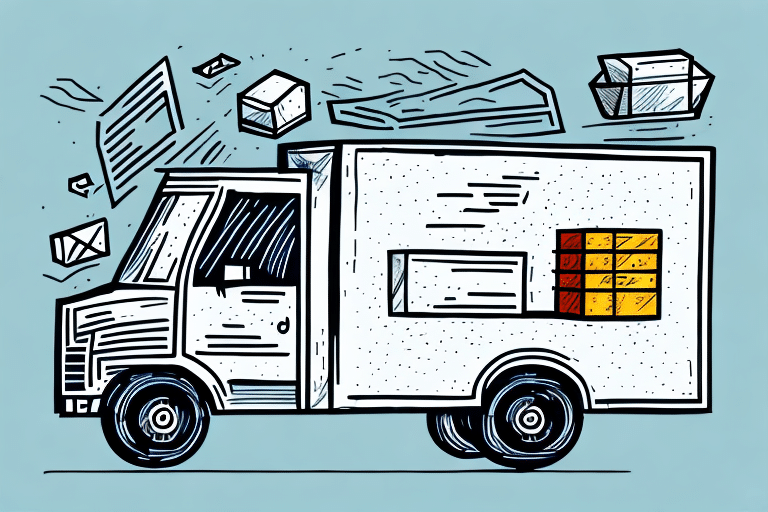What to Do When Your Package Is in Transit
Ordering something online brings excitement, but when your package is in transit, uncertainties can arise. Delays or lost shipments can be frustrating, but understanding the steps to take can alleviate stress and help ensure successful delivery. This guide provides comprehensive strategies to manage your package while it's on its way.
The Importance of Tracking Your Package
Utilizing a tracking system is crucial for monitoring your package's journey in real-time. Most major shipping companies, including USPS, FedEx, and UPS, offer robust tracking services that provide detailed updates on your shipment's location and estimated delivery time.
- Real-Time Updates: Track your package's progress at every stage of transit.
- Delay Notifications: Receive alerts about any unexpected delays.
- Peace of Mind: Reduce anxiety by knowing the exact status of your delivery.
According to a Statista report, over 90% of online shoppers utilize tracking services, highlighting their importance in the modern e-commerce landscape.
Understanding the Shipping Process
Grasping the shipping process can help you set realistic expectations for delivery times and understand potential delays. Here's an overview of the typical journey your package undergoes:
- Order Placement: After purchasing, your order is processed and prepared for shipment.
- Pickup: The shipping company collects the package from the merchant's warehouse.
- Transportation: Packages are transported via trucks, planes, or other vehicles to sorting facilities.
- Sorting: At sorting centers, packages are organized based on their delivery destinations.
- Final Delivery: Local carriers deliver the package to your doorstep.
Factors such as weather conditions, transportation delays, and high shipping volumes can impact the efficiency of this process.
Common Reasons for Delays in Shipping
Packages can face delays for various reasons, often beyond the control of shipping companies. Understanding these common causes can help you anticipate and mitigate potential issues:
- Weather Conditions: Severe weather like storms, heavy snowfall, or hurricanes can disrupt transportation.
- High Volume Periods: Holidays and sales events lead to increased shipping volumes, potentially slowing down delivery times.
- Customs Processing: International shipments may experience delays due to customs inspections and paperwork.
- Incorrect Shipping Information: Incomplete or incorrect addresses can lead to misrouting or returned packages.
For a detailed analysis of shipping delays, refer to the U.S. Customs and Border Protection guidelines on international shipping.
How to Contact the Shipping Company
Effective communication with the shipping company is essential when issues arise. Here's how to reach out:
- Customer Service Phone: Most companies offer dedicated phone lines for support. For example, USPS Customer Service can be reached at 1-800-275-8777.
- Email Support: Send detailed inquiries to the company's support email for documented assistance.
- Online Chat: Many carriers provide real-time chat support on their websites for quick resolutions.
- Local Offices: Visiting a local branch can sometimes expedite problem-solving.
Having your tracking number and order details ready will facilitate a smoother communication process.
Tips for Resolving Issues with Your Package
Encountering issues with your package can be stressful, but these tips can help you navigate and resolve problems effectively:
- Stay Calm and Polite: Approach customer service representatives with patience and courtesy.
- Provide Detailed Information: Share your tracking number, order details, and a clear description of the issue.
- Double-Check Shipping Information: Ensure that the delivery address and contact information are accurate.
- Monitor Tracking Updates: Regularly check for any new information or status changes regarding your package.
Following these steps increases the likelihood of a swift and satisfactory resolution.
The Role of Insurance in Shipping
Shipping insurance offers financial protection against potential losses during transit. Here's why it's beneficial:
- Protection Against Loss: Insurance covers the cost if your package is lost in transit.
- Coverage for Damages: If your package arrives damaged, insurance can cover repair or replacement costs.
- Peace of Mind: Knowing your package is insured reduces stress during the shipping process.
Not all shipping companies include insurance by default. It’s advisable to inquire about insurance options with carriers like FedEx or UPS when sending valuable items.
Alternative Delivery Options to Consider
Exploring alternative delivery methods can enhance the security and convenience of receiving your packages:
- Secure Lockers: Services like Amazon Locker provide a secure place for package pickup.
- Signature Confirmation: Requiring a signature upon delivery ensures that only authorized individuals receive the package.
- Scheduled Deliveries: Some carriers offer the option to schedule deliveries at times that are convenient for you.
These alternatives can reduce the risk of theft or misdelivery and provide greater control over your package's arrival.
How to Ensure Safe Delivery of Your Package
Taking proactive measures can significantly increase the likelihood of your package arriving safely and on time:
- Verify Shipping Information: Double-check the recipient's address, including apartment or suite numbers.
- Use Reputable Carriers: Choose carriers with strong delivery records, such as DHL or FedEx.
- Invest in Quality Packaging: Ensure that your items are securely packaged to withstand transit conditions.
- Label Clearly: Use clear labeling, including handling instructions like "Fragile" or "This Side Up."
Implementing these strategies can minimize the chances of your package encountering issues during shipping.
Steps to Take When Your Package Is Lost or Stolen
If your package is lost or stolen, acting promptly can help you recover your losses:
- Contact the Shipping Company: Inform the carrier about the missing or stolen package using your tracking information.
- File a Police Report: For stolen packages, a police report can be necessary for insurance claims.
- Reach Out to the Seller: Notify the retailer or seller for possible replacements or refunds.
- Submit an Insurance Claim: If you have shipping insurance, provide the required documentation to file a claim.
For more detailed guidance, refer to the National Consumers League on handling lost or stolen packages.
What to Do If Your Package Arrives Damaged
Receiving a damaged package requires immediate action to ensure you receive a replacement or refund:
- Document the Damage: Take clear photos of the package and its contents upon receipt.
- Notify the Carrier: Contact the shipping company to report the damage and initiate a claim.
- Contact the Seller: Inform the retailer about the damaged items to arrange for a replacement or refund.
- Retain Packaging: Keep all packaging materials, as they may be needed for inspection or claims processing.
Review the carrier's damage claim policies to understand your rights and the process involved.
How to Leave Feedback on Your Shipping Experience
Your feedback can influence shipping services and help other customers make informed decisions. Here's how to share your experience:
- Use Company Feedback Forms: Most carriers have dedicated sections on their websites for customer reviews.
- Third-Party Review Sites: Platforms like Yelp and Trustpilot allow you to rate and review shipping companies.
- Social Media: Share your experiences on social media platforms to reach a broader audience.
Providing constructive feedback not only helps companies improve their services but also assists other consumers in choosing reliable shipping options.
Conclusion
Managing a package in transit involves understanding the shipping process, utilizing tracking systems, and knowing how to address potential issues. By following the strategies outlined above, you can enhance your shipping experience, reduce stress, and ensure that your packages arrive safely and on time. Remember to stay informed, communicate effectively with shipping companies, and take proactive steps to protect your shipments.






















